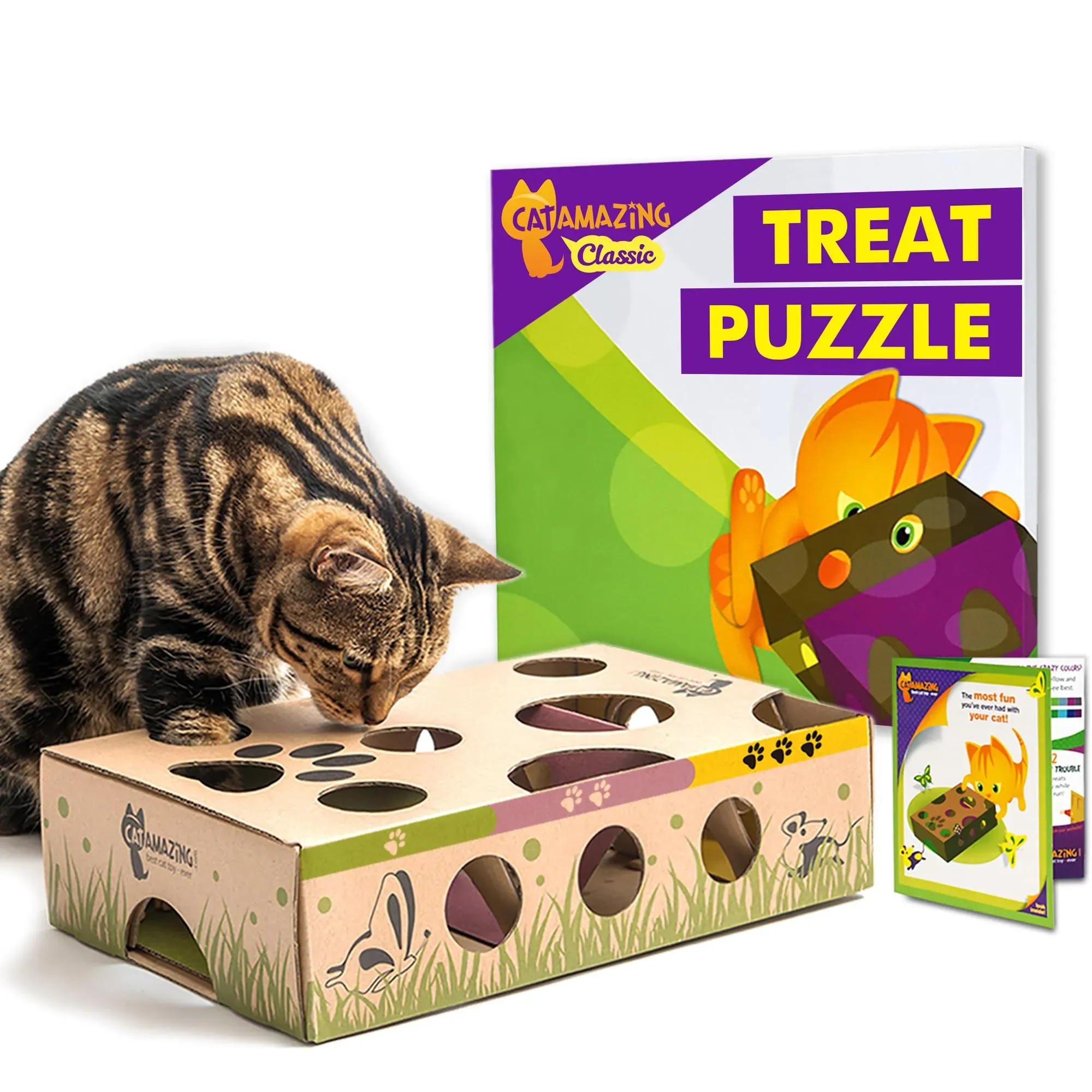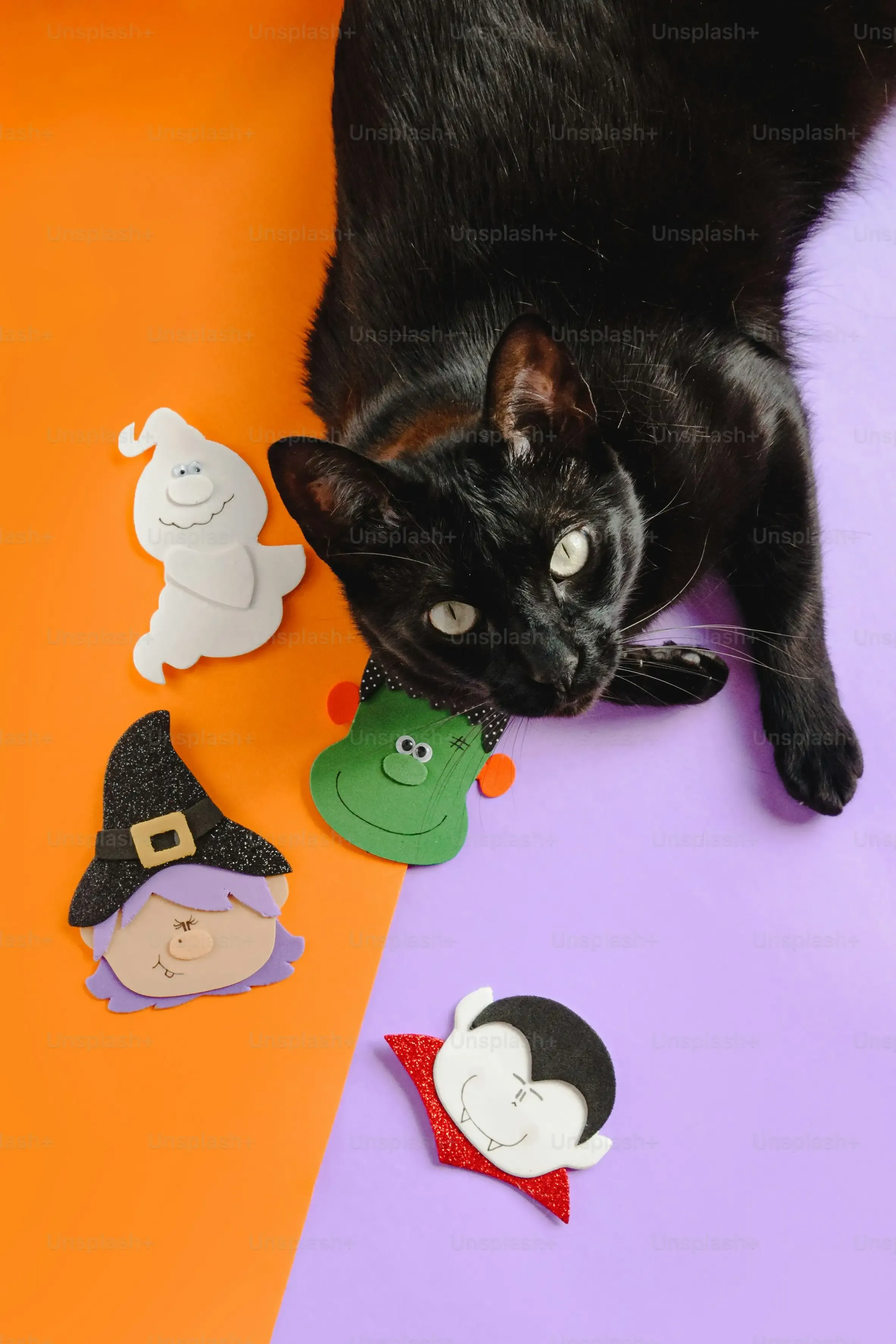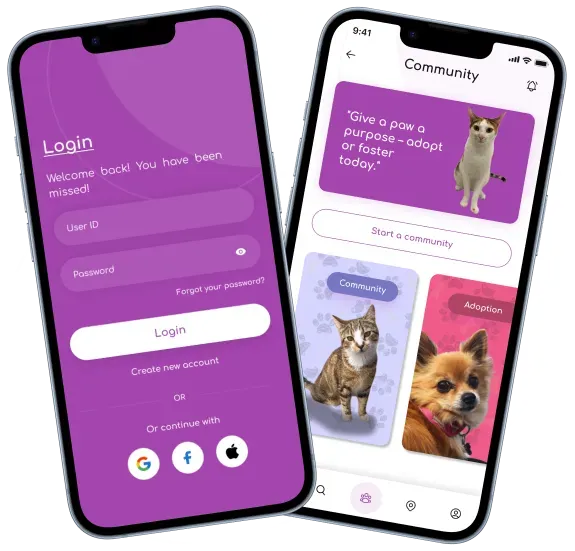Table of Contents
Ever catch your cat staring blankly at a wall, looking like they've solved all the mysteries of the universe and are now just waiting for the next season? Life indoors can sometimes be a little… predictable for our feline companions. They have it good, sure, but their wild instincts for hunting and problem-solving don't just disappear because you provide unlimited kibble.
What are interactive cat treat toys and why your cat actually needs one

What are interactive cat treat toys and why your cat actually needs one
Breaking Down the Buzz: What Exactly Are These Things?
Alright, let's cut to the chase. When we talk aboutinteractive cat treat toys, we're not just talking about some squeaky mouse you toss across the room. These are devices designed to make your cat think, strategize, and work a little bit for their reward – usually a tasty treat or even their regular kibble.
Think puzzle boxes they have to figure out, balls with adjustable holes that only release goodies when batted just right, or towers with levels where treats tumble down if they use their paws correctly. The core idea is simple: combine playtime with mealtime (or treat time) in a way that mimics their natural hunting instincts.
Beyond Boredom: Why Your Cat Isn't Just Being Picky, They Need This
Now, you might think your pampered house panther is perfectly content napping 18 hours a day. And maybe they are, on the surface. But deep down, they're wired for action. They're predators, problem-solvers. Without outlets for these natural behaviors, boredom sets in. And bored cats? They get creative in ways you probably won't appreciate – like scaling your curtains or deciding your favorite armchair is a new scratching post.
Using these toys provides essential mental stimulation. It keeps their brains sharp and their bodies moving. It's like giving them a little job to do, a puzzle to solve, which is incredibly satisfying for them. Plus, for cats who eat too fast, these toys force them to slow down, which can prevent digestive upset and make mealtime last longer, providing more satisfaction.
- Reduces boredom and anxiety
- Provides mental stimulation
- Encourages physical activity
- Helps prevent rapid eating
- Taps into natural hunting instincts
Exploring different types of interactive cat treat toys

Exploring different types of interactive cat treat toys
The Thinker's Game: Puzzle Feeders Explained
so you're sold on the idea that your cat needs a job. But what kind of job? For the feline brainiacs out there, the puzzle feeder is the way to go. These aren't just bowls; they're multi-level challenges, sliding panels, or hidden compartments where you stash the goods. Your cat has to figure out how to manipulate the toy – pushing, pawing, nudging – to get the treats to drop out or become accessible.
It’s less about chasing something and more about problem-solving. Imagine a tiny escape room for snacks. These toys range from simple boards with pegs to complex towers with multiple steps. They're fantastic for slowing down rapid eaters and providing serious mental workout. Watching them figure it out is half the fun, though sometimes you wonder if they're judging your intelligence for not just handing over the food.
Roll With It: Wobble and Ball Dispensers
Then you have the movers and shakers of theinteractive cat treat toysworld: the rolling and wobbling dispensers. These are typically ball-shaped or have a weighted base that makes them unpredictable. You load them up with kibble or small treats, and your cat has to bat them around, chase them, and generally abuse them until a treat accidentally falls out of a strategically placed hole.
These toys tap directly into the prey drive. The erratic movement mimics a scurrying critter, encouraging stalking, pouncing, and chasing. They're great for cats who need more physical activity or who get easily frustrated by static puzzles. The size of the treat opening is often adjustable, which is a nice touch, letting you control the difficulty level (and the speed at which your living room becomes a minefield of kibble).
So, which one sounds like your cat's next obsession?
- Puzzle Feeders: Best for cats who like to figure things out and need mental challenges.
- Wobble/Ball Dispensers: Ideal for cats with high energy and a strong prey drive who enjoy chasing and batting.
- Combination Toys: Some toys mix elements, offering varied challenges.
How to pick the perfect interactive cat treat toy for your picky eater

How to pick the perfect interactive cat treat toy for your picky eater
Decoding Your Cat's Inner Motivations
Alright, so you're staring down a wall of clever contraptions, all promising feline engagement, but your cat acts like anything that isn't a direct food drop is some kind of elaborate trap. Picking the rightinteractive cat treat toyfor a picky eater isn't just about the toy; it's about understanding your cat.
Is your cat a hunter, obsessed with chasing and batting? Or are they more of a puzzle-solver, meticulously figuring out how things work? Watch how they play with their current toys. Do they prefer things that roll away, or things they can manipulate with their paws? Do they give up easily, or do they persevere? Their existing play style gives you major clues about which type of interactive toy might actually hold their attention long enough to be worth the investment.
Matching the Toy to the Temperament
Once you have a handle on your cat's preferred play style, you can start narrowing down the options. For the energetic chasers, a simple treat ball that rolls and dispenses kibble might be the perfect entry point. The movement is inherently rewarding, and the treat is a bonus for engaging. For the more thoughtful, less physically inclined cat, a static puzzle board where they have to slide panels or lift covers might be less intimidating and more mentally stimulating.
Don't start with something overly complicated. If the first toy is too difficult, your picky eater will likely just ignore it or get frustrated. Think "easy win" initially. A toy with larger openings or fewer steps to get the treat can build confidence. You want them to associate the toy with positive outcomes (deliciousness!), not with unsolvable riddles.
Cat Personality | Suggested Toy Type | Why it Works |
|---|---|---|
The Chaser/Pouncer | Wobble/Ball Dispenser | Mimics prey movement, encourages physical activity. |
The Puzzle Solver | Static Puzzle Board | Engages cognitive skills, rewards manipulation. |
The Easily Frustrated | Simple Dispenser (large holes) | Low barrier to entry, quick rewards build confidence. |
Considering Age and Physical Ability
Finally, factor in your cat's age and physical condition. A spry young kitten might handle a complex multi-level tower with ease, while an older cat with arthritis might find batting a heavy ball around uncomfortable. Look for toys that are appropriate for their size and strength.
For senior cats or those with mobility issues, puzzle boards that sit on the floor and require only paw manipulation are often a better choice than toys they have to chase or bat forcefully. You want to provide stimulation, not cause discomfort or injury. It's about finding a challenge that's engaging but achievable for *your* specific cat, not just the one featured in the product video doing parkour off the furniture.
Tips and tricks for success with interactive cat treat toys

Tips and tricks for success with interactive cat treat toys
Making the First Introduction Count
So, you've brought home your choseninteractive cat treat toy, unwrapped it with the enthusiasm of a kid on Christmas morning, and presented it to your cat who immediately eyed it with deep suspicion. This is normal. Cats aren't always thrilled with new things just showing up. You can't just plop it down and expect them to instantly become a puzzle-solving prodigy.
Start slow. Don't fill the toy completely at first. Put just a few high-value treats or a small amount of their favorite kibble in it. Make it easy for them to get the reward initially. Maybe even leave the top off a puzzle toy or widen the opening on a ball dispenser so treats fall out with minimal effort. The goal is to create a positive association right away. You want them to think, "Hey, this weird thing gives me snacks!" not "Ugh, another one of human's impossible contraptions." Play with the toy yourself a little (yes, seriously) to show them how it works, letting treats fall out as you do. Let them see you interacting with it in a non-threatening way.
Keeping the Challenge Engaging, Not Enraging
Once your cat seems to get the hang of the basic concept, you can gradually increase the difficulty. Tighten the opening on the treat ball slightly. Add more steps to the puzzle feeder. But pay close attention to their reaction. If they're batting the toy around enthusiastically, great! If they're giving it one half-hearted paw swat and then walking away looking utterly unimpressed or, worse, actively annoyed, you've probably ramped up the difficulty too quickly.
Think of it like introducing a new level in a video game. You don't go from level 1 to level 100 overnight. Keep it just challenging enough to be interesting, but not so hard that they get frustrated and give up. Rotate toys if you have more than one to keep things fresh. A toy they ignored last month might suddenly become fascinating again. And always, always end on a positive note. Even if they only got one treat out, praise them for their effort.
- Start with high-value treats they love.
- Make it easy to get rewards initially.
- Show them how the toy works (seriously, demo it!).
- Gradually increase difficulty as they gain confidence.
- Watch for signs of frustration and simplify if needed.
- Rotate toys to maintain interest.
More Than Just a Game: The Real Win with Interactive Cat Treat Toys
So, there you have it. Interactive cat treat toys aren't just some frivolous purchase to clutter your floor. They're a legitimate way to inject a bit of purpose and challenge back into your cat's cushy indoor life. By making them work for their snacks, you're not just feeding them, you're feeding their brains and satisfying those ancient hunting instincts that are still very much alive, even if the only prey is a rogue kibble piece. Choosing the right toy and integrating it smoothly can make a significant difference in reducing boredom-related mischief and keeping your feline friend mentally sharp and physically active. Give one a shot; your cat might just thank you, probably by not attempting to scale your curtains for the third time today.